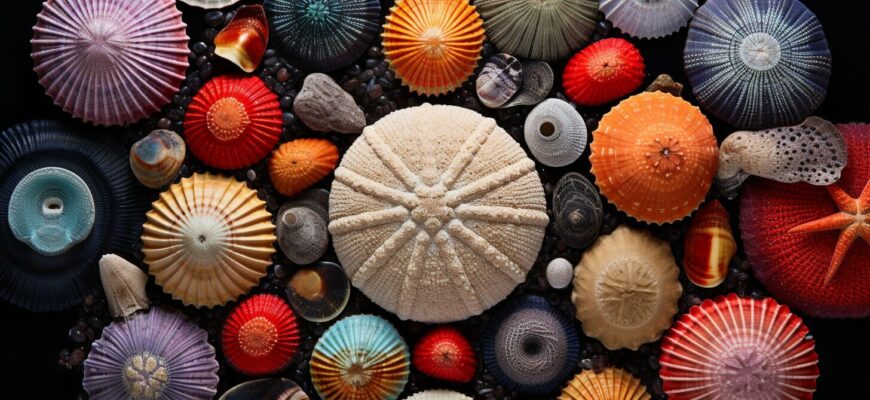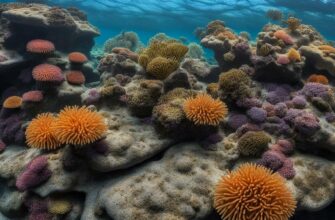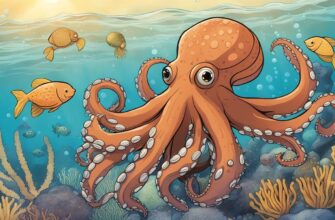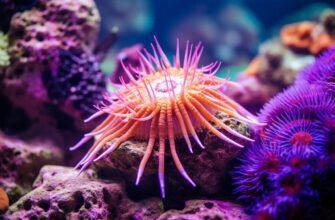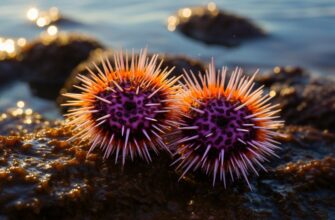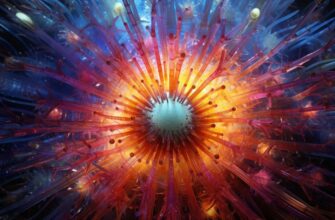Sea urchins are fascinating creatures found in oceans all over the world. They are often compared to shellfish due to their similar appearance and habitat, but is a sea urchin really a shellfish? This question has sparked debate among scientists and seafood enthusiasts for years. In this article, we will explore the classification of sea urchins and their relationship to shellfish. Get ready to dive into the world of marine biology and learn more about these fascinating creatures.
- What is a Sea Urchin?
- Anatomy of a Sea Urchin
- What Defines a Shellfish?
- Sea Urchins and Shellfish Classification
- Similarities Between Sea Urchins and Shellfish
- Differences Between Sea Urchins and Shellfish
- Shellfish vs Seafood
- Ecological Importance of Sea Urchins
- Frequently Asked Questions about Sea Urchins and Shellfish
- Are sea urchins considered shellfish?
- Are sea urchins and other shellfish safe to eat?
- Is it true that sea urchins can regrow their spines?
- Do sea urchins and shellfish have any environmental benefits?
- Are sea urchins and other shellfish at risk of overfishing?
What is a Sea Urchin?
Sea urchins are marine animals that belong to the phylum Echinodermata. They are closely related to starfish and sea cucumbers and are characterized by their spiny, globe-shaped bodies.
Sea urchins are found in oceans around the world and can live in a range of environments, from shallow waters to depths of over 5,000 meters. They play an important role in marine ecosystems, both as herbivores that graze on algae and as prey for a variety of predators.
Anatomy of a Sea Urchin
The body of a sea urchin is spherical or oval-shaped and covered in spines. The spines are used for protection and movement, and can be long and sharp or short and blunt, depending on the species.
Sea urchins have a mouth located on the underside of their body, surrounded by five teeth which they use to scrape algae off rocks or other surfaces. The internal organs of a sea urchin are contained within a hard, calcareous shell called a test.
| Characteristic | Description |
|---|---|
| Size | Sea urchins range in size from less than an inch to over 8 inches in diameter. |
| Lifespan | Sea urchins can live for up to 30 years, depending on the species and environmental factors. |
| Behavior | Sea urchins are primarily nocturnal and hide in crevices during the day to avoid predators. |
Fun Fact: Some species of sea urchins are able to clone themselves, producing genetically identical offspring through a process called parthenogenesis.
Overall, sea urchins are fascinating creatures with a unique appearance and important ecological role. Understanding their anatomy and behavior is essential for appreciating their place in the marine ecosystem.
What Defines a Shellfish?
Shellfish are aquatic animals that have a shell or exoskeleton for protection. They belong to the broader group of invertebrates, which means they lack a backbone. Some common examples of shellfish include clams, oysters, mussels, and crabs.
Shellfish are classified based on their physical characteristics, habitat, and ecological role. One of the key criteria used for classification is the type of shell they possess. For example, bivalves have hinged shells that can be opened and closed, while gastropods have a single coiled shell.
In addition to their physical characteristics, shellfish are also classified based on their habitat. Many species are found in marine environments such as oceans and estuaries, while others inhabit freshwater systems like rivers and lakes.
Shellfish are important from an ecological and economic perspective. They play a vital role in marine ecosystems and are a valuable food source for humans. However, it is important to understand the classification system in order to make informed decisions about fishing and harvesting practices.
Sea Urchins and Shellfish Classification
Sea urchins are a group of spiny, spherical animals found in oceans all over the world. They have long been a subject of fascination for scientists and laypeople alike, but there is much debate about how sea urchins should be classified.
The scientific classification of sea urchins has been a subject of debate for many years. Some scientists consider them to be echinoderms, a group of marine animals that includes starfish and sand dollars. Others, however, argue that their unique characteristics, such as their spines and their lack of arms, mean that they should be classified separately.
In terms of shellfish classification, there is also some ambiguity. The term “shellfish” is often used to refer to a broad group of animals, including crustaceans such as crabs and lobsters, and mollusks such as oysters and clams. While sea urchins are not typically considered to be crustaceans, they do have a hard, calcareous shell that is similar to that of many mollusks.
Overall, while there is no clear consensus on the classification of sea urchins as shellfish, many scientists believe that they share enough characteristics with other shellfish to be grouped together.
Similarities Between Sea Urchins and Shellfish
While sea urchins may not be true shellfish, they share several characteristics with this group of aquatic animals.
| Characteristic | Explanation |
|---|---|
| Marine habitat | Like many shellfish, sea urchins live in marine environments such as coral reefs and rocky shores. |
| Protective shells | While sea urchins do not have traditional shells, they have hard, calcified plates that provide protection. Similarly, many shellfish have external shells for protection. |
| Filter feeders | Some species of sea urchins, like some shellfish, are filter feeders that obtain their food by extracting tiny particles from the water. |
These similarities have led to confusion and debate over the classification of sea urchins as shellfish. While they may not fit the traditional definition of this group, they share several important characteristics that connect them to their aquatic neighbors.
Differences Between Sea Urchins and Shellfish
While sea urchins are often classified as shellfish, there are some notable differences between them and other members of this group.
Firstly, sea urchins lack the hard, protective shell that is characteristic of most other shellfish. Instead, their bodies are covered in spines that serve a similar function. Additionally, while some shellfish are filter feeders or scavengers, feeding on plankton and dead organic matter, sea urchins are herbivores that graze on algae and other marine plant life.
Another notable difference lies in their ecological role. While many shellfish are important for commercial fishing and contribute to the food chain, sea urchins have a more complex role in marine ecosystems. They play a vital role in maintaining the health of coral reefs, controlling algal populations, and contributing to biodiversity.
Despite these differences, there are also many similarities between sea urchins and other shellfish. Both groups are found in marine environments and have adapted to survive in salty water. They are also important sources of food for other marine creatures, including humans.
Shellfish vs Seafood
It’s important to note that the term “shellfish” applies specifically to aquatic invertebrates with shells, while “seafood” is a more general term that can also include fish and other marine animals. While sea urchins are classified as shellfish, they are also considered a type of seafood.
Ecological Importance of Sea Urchins
Sea urchins play a crucial role in maintaining healthy marine ecosystems. They are herbivorous grazers that consume seaweed, which can otherwise overrun coral reefs and other important habitats for marine life. In this way, sea urchins contribute to the regulation of seaweed populations and help maintain balance in the ecosystem.
Furthermore, sea urchins are preyed upon by a variety of predators, including sea otters, crabs, and some fish. By providing a source of food for these predators, sea urchins contribute to the complex food web of marine ecosystems.
Sea urchins also have a unique ability to calcify their exoskeletons, which contributes to the formation of marine sediments and plays a role in carbon cycling. In addition, sea urchins have been found to host a variety of organisms on their spines and shells, further contributing to the diversity of marine life.
Despite their important ecological role, sea urchins can also be harmful to marine ecosystems if their populations become too large. This can lead to overgrazing of seaweed and other negative effects on the ecosystem. As such, understanding the role of sea urchins in marine ecosystems is crucial for maintaining healthy and balanced habitats for all marine life.
Frequently Asked Questions about Sea Urchins and Shellfish
Are sea urchins considered shellfish?
Yes, sea urchins are classified as shellfish due to their hard, protective outer layer.
Are sea urchins and other shellfish safe to eat?
Yes, many species of sea urchins and shellfish are considered safe for human consumption when properly prepared and cooked.
Is it true that sea urchins can regrow their spines?
Yes, some species of sea urchins are capable of regenerating their spines if they are damaged or lost.
Do sea urchins and shellfish have any environmental benefits?
Yes, sea urchins and other shellfish play important roles in marine ecosystems by helping to filter water, provide food for other animals, and maintain biodiversity.
Are sea urchins and other shellfish at risk of overfishing?
Yes, many species of sea urchins and other shellfish have been overfished in some regions, leading to declines in their populations. Sustainable fishing practices are important to ensure their long-term survival.

